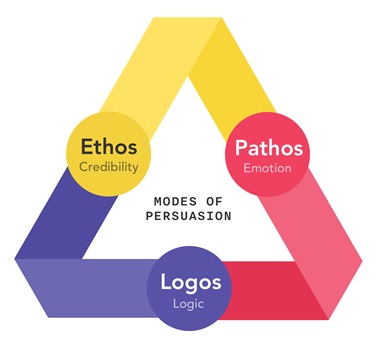The power of persuasion: How to influence key stakeholders

May 21, 2023
"Persuasion is the art of selling an idea, a product, or an opinion that can influence and inspire others." - Samira Gupta
From the boardroom to the sales pitch, the art of persuasion is a vital skill that can make or break a leader's success. Whether you are rallying your team around a new strategy, convincing investors to back your vision, or selling a groundbreaking product to clients, persuasion is the linchpin that holds it all together.
{Persuasion} At its core, persuasion is the art of selling - the ability to craft a compelling case that not only overcomes objections but also inspires and motivates others to take action. In simple words, it is the act of convincing someone to believe or do something through reasoning or argument.
In today’s blog, we will introduce you to the basics of this skill and reveal how you can master it to drive success and achieve goals in your organization.
Before we begin…
The first step towards effective persuasion, which starts way before you start interacting with your target audience, is to do your homework and be thoroughly prepared. A few things that you should definitely have a clear understanding of are:
1. THE AUDIENCE: Knowing your audience is one of the most critical aspects of effective persuasion. This involves understanding their background, beliefs, and values, as well as their potential objections or concerns. Some individuals are more rational and logical in their decision-making, while others are more emotionally driven. Understanding which type of audience you are dealing with can help you tailor your message in a way that resonates with them. For example, if you're dealing with a logical audience, you may want to focus on presenting data and facts to support your argument. On the other hand, if you're dealing with an emotional audience, you may want to use more vivid language and storytelling techniques to appeal to their emotions. It is also important to understand what triggers or inspires your audience. This could include things like personal experiences, or social influences. By understanding what motivates your audience, you can speak directly to their needs and aspirations
2. THE OCCASION: Whether you're presenting to a board of directors, pitching a new product to potential clients, or speaking at a conference, the context in which you deliver your message can have a significant impact on its effectiveness. By tailoring your message to the occasion, you can ensure that it is relevant, engaging, and impactful. Ask why your audience has devoted time and energy to listen to you and what may be their expectations from this interaction.
3. THE “ASK” OR “CALL TO ACTION”: It's crucial to identify your "ask" or "call to action." What is it that you want your audience to do as a result of your message? Whether it's to make a purchase, adopt a new strategy, or support a cause, your call to action should be clear, concise, and compelling. By framing your message around a specific call to action, you can make it easier for your audience to understand what you're asking of them and why it matters.
The knowledge you gain through this initial research will act as the foundation for the effectiveness of your persuasive strategy. It will help avoid oversharing or providing the wrong information to your audience that may in turn disengage or disinterest your audience.
How to persuade your audience?
Now, let's explore the heart of the matter - Persuasion Strategies that can empower you to effectively communicate and persuade your audience.

1. Logos: Using logos involves making a logical and rational argument that is backed up by sound evidence to persuade your audience. This can include citing research studies, providing statistical evidence, or presenting logical arguments. For example, if you're trying to persuade your team to adopt a new strategy, you might use past performance data to demonstrate how the new strategy can improve results. One important aspect is to build value in your proposition, such as by describing the benefits or experience that your product or service can provide. You can also offer solutions to problems that your audience may be facing, highlighting how your proposal can help to address their needs.
2. Pathos: This strategy involves appealing to your audience's emotions and values, as well as demonstrating your willingness to listen and empathize with their concerns. This can be done through your words, body language, and overall demeanor, which should convey a sense of authenticity and commitment to your message. You can use stories, metaphors, and other techniques to tap into their feelings and motivate them to take action. For example, if you're trying to persuade your team to work harder, you might tell a story about someone who overcame adversity through hard work and perseverance.
3. Ethos: This is a persuasion strategy that involves establishing credibility and believability as a speaker. To persuade effectively, it's crucial to establish that you're the right person to listen to by highlighting your expertise, experience, and integrity. You can also build common ground with your listener by demonstrating that you understand their needs and concerns, and by showing that you care about their success. Real-world experience is another important aspect as it allows you to speak from a position of authority and demonstrate your ability to put your ideas into action. By focusing on these key elements, you can establish yourself as trustworthy and increase your chances of persuading your audience to take action.
These strategies are not mutually exclusive and can be tailored to suit a specific audience and context. Effective persuasion often involves a combination of these strategies.
Some tips to remember…
1. Identify and address the problem:
When it comes to persuasion, it's important to understand that different situations call for different strategies. However, one common thread among successful persuasive efforts is the ability to accurately identify and articulate the problem statement, and then provide a solution that is both accurate and relevant to the audience's needs and concerns. Maintaining a positive relationship with the audience is also very crucial. If the audience feels that their needs and concerns are not being taken seriously, or if they feel that the speaker is only interested in advancing their own agenda, they are likely to become defensive and resistant to persuasion.
Consider ways to persuade an employee to stay back when she requests a 7-day leave during a time of tight deadlines.
It's important to have a conversation to understand the employee's needs and try to find a mutually beneficial solution. Start by asking open-ended questions to better understand the reason behind the request. If the employee mentions feeling overworked, try to identify the specific areas where they need support and find ways to alleviate their workload. Maybe she leaves the office very late and doesn’t get enough sleep. Offer to reduce his working hours if the employee can deliver at least a few assignments during the day. It's important to emphasize the value the employee brings to the team and the importance of their contribution during this critical time. This can help the employee feel appreciated and motivated to stay on board.
If the employee is still insistent on taking the leave, explore alternatives such as reducing the length of the vacation or finding a way for the employee to work remotely while still being able to get some mental rest. Ultimately, the key is to show that the employee is valued and that the company is willing to work with them to find a solution that meets both the employee's needs and the company's goals. This can help foster a positive working relationship and increase the chances of the employee getting persuaded to stay back.
2. Don’t overshare information:
Another persuasion tip to keep in mind is when presenting a solution to a problem, it's important to only share relevant information with the audience. Unnecessary information can dilute the message and distract the audience from the main point.
For example, a company has to present a proposal to a potential investor for a new product line. The investor is primarily interested in the potential return on investment (ROI) and the market demand for the product. During the presentation, the company should focus on providing information that directly addresses the investor's concerns, such as market research that shows a high demand for the product and the estimated ROI based on sales projections. Sharing irrelevant information, such as the personal hobbies of the team members or the company's history, would only dilute the message and distract the investor from the main point. By staying focused on the relevant information and avoiding unnecessary details, the company can make a more compelling case for why the investor should fund the new product line. This approach ensures that the investor can clearly understand the potential benefits of the product line without being swayed by irrelevant information.
It's important to remember that persuasion is not about manipulating or tricking others into doing what you want. Rather, it's about genuinely connecting with others and working towards a shared goal. When you approach persuasion with integrity and a focus on collaboration, you can build strong relationships that will benefit you and those around you for years to come.
So, the next time you need to persuade someone, keep these tips in mind and approach the situation with confidence, honesty, and a willingness to listen. With practice and perseverance, you can become a master of persuasion and achieve your goals with ease.